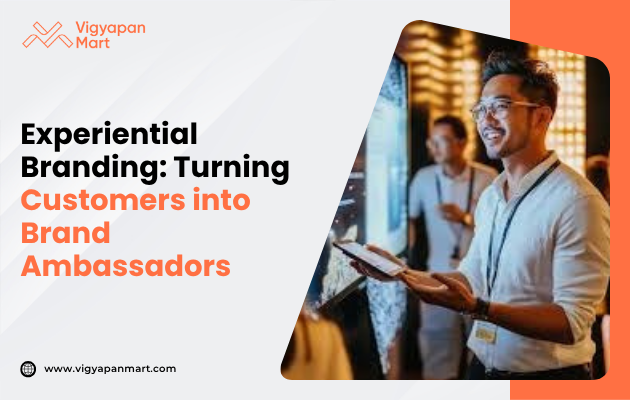How Brands Measure The Success Of Experiential Marketing

Experiential marketing has emerged as a powerful tool for brands looking to engage consumers in memorable and impactful ways. However, measuring the success of these campaigns can be complex. Since there are no solid metrics like online marketing, brands use different methods to measure the success of such campaigns. In this blog, we will explore how brands assess the effectiveness of their experiential marketing efforts, highlighting key metrics, real-life examples, and often overlooked aspects of measurement.
Understanding Experiential Marketing
Experiential marketing involves creating two-way experiences that allow consumers to interact directly with a brand.
This can include the following
- Live events
- Pop-up shops
- Interactive installations
- Digital experiences, etc.
The primary goal of experiential marketing is to foster emotional connections with consumers. This increases brand loyalty and advocacy among consumers and improves the brand image. According to a study by The Wharton School, experiences often yield greater satisfaction than material goods. This makes them a valuable component of modern marketing strategies.
Key Metrics for Measuring Success
To evaluate the impact of experiential marketing campaigns, brands typically focus on several key performance indicators (KPIs):
- Foot Traffic and Attendance: Measuring the number of participants at an event provides immediate insight into the campaign. For example- Visa’s interactive football pitch during the FIFA World Cup attracted over 120,000 visitors. This alone generated significant engagement time and led to big profitable numbers.
- Brand Activation Reach: This metric assesses how far the campaign extends across various channels. Brands track impressions, reach, and engagement across physical and digital platforms to measure overall exposure.
- Social Media Engagement: Monitoring social media mentions, shares and user-generated content related to an event can indicate its virality and public sentiment. For example-Google’s 2015 Impact Challenge allowed the public to vote on which non-profits would receive funding through interactive posters. This created extreme online conversation and made the campaign highly successful.
- Purchase Intent Influence: Survey data from past events also help brands to understand how the experience affected attendees' likelihood to purchase a product or service. It is often used to measure shifts in consumer perception.
- Customer Feedback: Collecting direct feedback through interviews or surveys helps brands understand what resonated with attendees. Also, it helps in predicting what could be improved for future campaigns.
Real-Life Examples
Several brands have successfully implemented experiential marketing campaigns that not only engaged consumers but also provided measurable results:
- Ben & Jerry’s “Tweet to Get Ice Cream” Campaign: This campaign encouraged consumers to tweet their desire for free ice cream, which was then delivered by a sampling truck. It effectively combined social media with experiential marketing, enhancing brand awareness and loyalty while generating significant online buzz.
- Lean Cuisine’s #WeighThis Campaign: Lean Cuisine created a powerful message about self-worth that resonated deeply with its audience. They invited women in New York’s Grand Central Station to weigh in on their life experiences rather than their physical weight. This campaign not only promoted brand values but also fostered community engagement and shared a message.
- Jaguar’s F-Pace Launch: The brand created a spectacle by driving a car around a giant Hot Wheels-style loop in front of an audience. This event generated viral content that reached over 935 million people across social media and traditional media channels.
Advanced Measurement Factors of Experiential Marketing
While many brands focus on immediate metrics like attendance and social media engagement, there are deeper insights that can be overlooked:
- Look for attendee’s dwell time to get insights about brand effectiveness.
- Track how experiential marketing influences long-term consumer behavior
- Evaluating how an experiential campaign enhances other marketing efforts such as website traffic, search volume, or brand recall.
Conclusion
Measuring the success of experiential marketing requires a different approach than other marketing methods. This goes beyond the basic attendance figures. By leveraging various KPIs and learning from real-life examples, brands can gain valuable insights into their campaigns' effectiveness and make informed decisions for the future.Please note that experiential marketing is also evolving with technology and creativity. Those who adapt their measurement strategies will create more meaningful connections with consumers in the long run. Want to launch your next experiential advertising campaign? Connect with Vigyapan Mart today.









